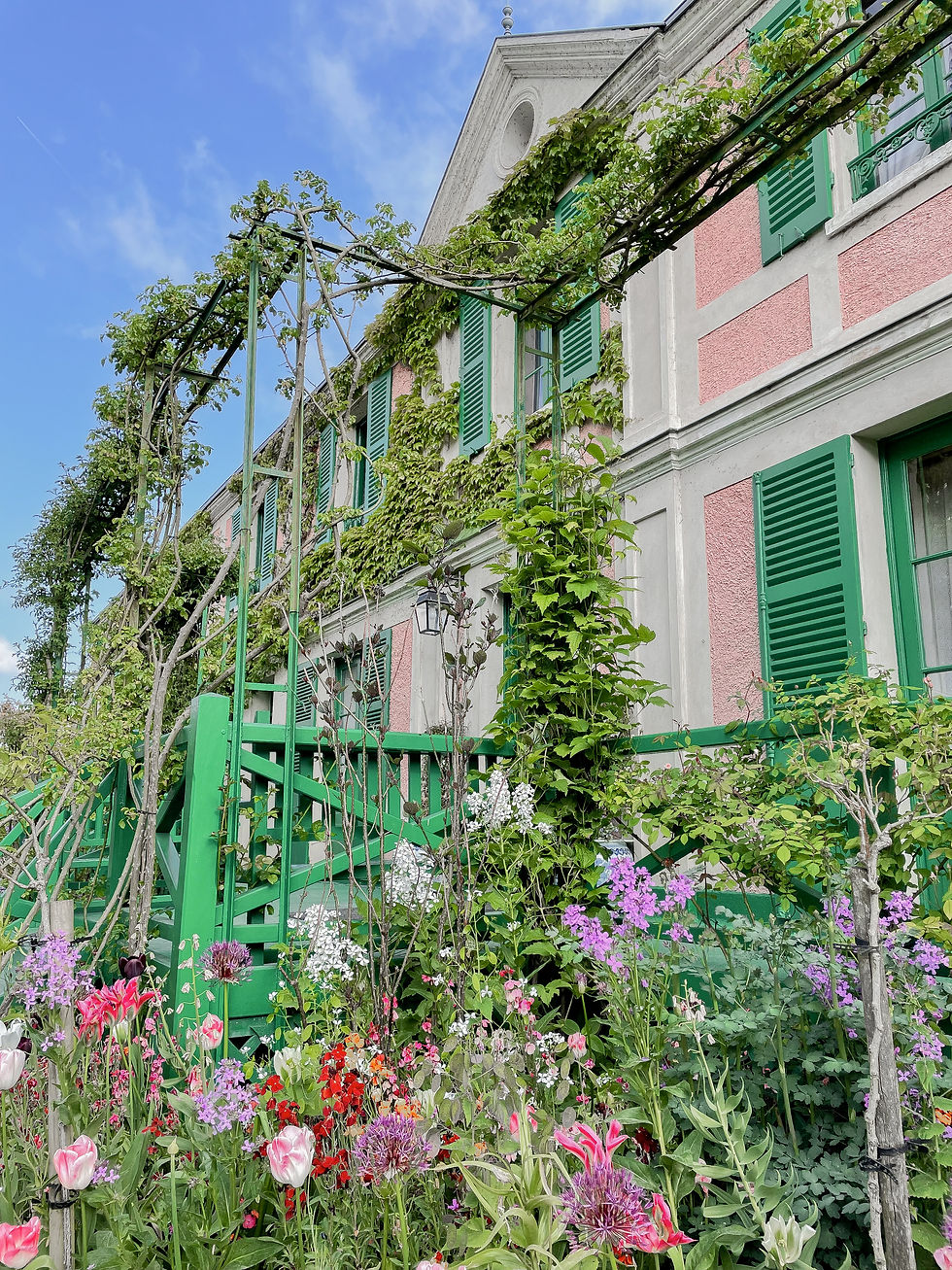A Walk Through Monet's Gardens
Since the beginning of planning for this mother/daughter Paris trip, my mom has had Claude Monet’s house in Giverny on her list of must-see places. Monet's property is a vision of loveliness, from the pink house and its bright interiors to the overflowing flower beds and peaceful pond.
My mom booked a guided day trip that included transportation from Paris to Giverny, lunch in a nearby village at a five-star hotel, and a trip to Versaille. Although initially, I was a little resistant to the idea of a tour guide, it was a wonderful experience and so nice not to have to worry about organizing the transportation to each place.

The Flower Garden
Our tour guide was amazing and incredibly knowledgeable. For the entirety of the one-hour ride to Giverny, she detailed the origins and history of impressionism in France, Claude Monet’s life, artistic career, his inspirations, and the Japanese gardens and art that influenced Monet. Her description of Claude Monet’s life painted a picture not so dissimilar from any other tale of a so-called starving artist: a gifted but largely unappreciated artist, a humble beginning, a cozy cottage in a remote village in the French countryside, and a love for gardening. Based solely on the tour guide’s words and the practically uninterrupted rolling green hills and farmland we were passing, I was anticipating a beautiful garden, but one that was only slightly bigger than the average suburban American front yard.
My first glance at Monet’s house and garden defied my preconceived notions and instantly took my breath away. It’s as if an artist had splatter-painted every color of the rainbow on an otherwise half-blue, half-green canvas. Every conceivable inch of soil is obscured by tall leafy green stems supporting the most vibrant flowers. I have been to tulip farms and botanical gardens with fewer varieties of tulips and rare species of flowers.
Compared to the meticulously manicured grounds of the royal gardens in Paris, there is a natural wildness to Monet’s garden that makes it all the more whimsical. Rather than organizing his garden according to the type of flower, he focused on mixing varieties and experimenting with the color arrangement. The result is a garden that makes you believe in such things as garden gnomes and flower fairies.








The House
Needless to say, Monet’s house was not the modest pale yellow cottage with greenery overtaking an old-stone wall that I had envisioned. Instead, it was a large cherry blossom-pink abode decorated with bright emerald green shutters and doors. The inside was just as vibrant, with nearly every room being an explosion of color and patterns. With the picturesque views of the flower garden, and the cheerful atmosphere of the interior, Monet’s house would inspire anybody with even the smallest creative bone to want to paint or sketch.





The Water Garden
Across the street from Monet’s house is his water garden that inspired the famous water lily paintings. Interestingly, my mom and I visited the water lily rooms at the Musée de l’Orangerie the day before, so Monet's painted perception of his own garden was fresh in my mind. Unlike the melancholy shades of blue used in his paintings, on a sunny morning in early May, the water garden is an amalgamation of green accented with brilliant flowers and cascading wisteria. Whereas the flower garden was more cheerful, this area was significantly more serene. From a certain position, you had a perfect view of the calm water of the pond, a glimpse of the bright pink house, and behind that, the green hills of the French countryside, which on this day, were complemented by a bright blue sky.





.png)

.png)








Comments